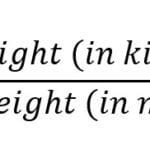Most Accurate Body Fat Calculator : Calculate army body fat
Maintaining a healthy body composition is key to long-term health, yet many people focus solely on weight when evaluating their fitness levels. While weight is a component of health, body fat percentage (BFP) offers a more detailed picture by revealing the proportion of fat compared to lean mass and We have the most accurate body fat Calculator. Which usase latest Army Body Fat calculator method.
Army Body Fat Calculator

Ideal Body Fat levels & Food Accordingly
Body fat percentage is the proportion of fat in your body compared to your total body weight. We not just use this but your BMI, Ideal Weight, Location and calculate your body matrics to suggest you best meal plans Check our FREE! app.
What is healthy body fat percent or
Why Measure Body Fat Percentage?
Body fat percentage is a critical measure of overall health and fitness, indicating the proportion of your body weight made up of fat compared to lean mass (muscles, bones, water, etc.). While everyone needs body fat for essential functions like energy storage, temperature regulation, and hormone production, maintaining a healthy range is vital for optimal health, athletic performance, and reduced risk of diseases:
- Assessing Health Risks: A high body fat percentage is associated with increased risks of cardiovascular disease, diabetes, and certain cancers.
- Monitoring Fitness Levels: Tracking BFP helps you understand changes in muscle mass and fat loss, providing a more accurate measure of progress than weight alone.
- Designing Fitness Programs: Knowing your body fat percentage can guide the design of personalized fitness and nutrition plans.

UNDERSTANDING BODY FAT TYPES
Essential vs. Storage Fat:
- Essential Fat: Necessary for life and reproductive functions, essential fat is found in the bone marrow, nerves, and organs. Men require about 3-5% essential body fat, while women need around 10-13%.
- Storage Fat: This is the fat that accumulates when you consume more calories than you burn. While some storage fat is necessary to protect internal organs, excess storage fat can be detrimental to health.
What is healthy body fat percent?
Unlike weight or Body Mass Index (BMI), body fat percentage provides a more accurate representation of your body composition. It helps distinguish between lean muscle and fat, giving insights into health risks and fitness levels. Excess body fat can lead to health issues such as cardiovascular disease, diabetes, and joint problems. Conversely, too little body fat can impair bodily functions, weaken the immune system, and cause hormonal imbalances.
Ideal Body Fat Percentage by Age and Gender
The healthy range for body fat percentage varies depending on age, gender, and activity level. Women generally require a higher percentage of body fat than men due to reproductive needs. Here's a breakdown of body fat levels women and men seperately:
| Category | Women (%) | Men (%) |
|---|---|---|
| Essential Fat | 10–13 | 2–5 |
| Athletes | 14–20 | 6–13 |
| Fitness | 21–24 | 14–17 |
| Average | 25–31 | 18–24 |
| Obese | >32 | >25 |
Age and Body Fat:
As we age, maintaining a lower body fat percentage becomes more challenging due to metabolic slowdown and hormonal changes. Healthy ranges may increase slightly with age:
- 20–39 years: 21–32% for women; 8–19% for men.
- 40–59 years: 23–33% for women; 11–21% for men.
- 60+ years: 24–35% for women; 13–25% for men.
body fat measurement
Body Fat Percentage Finder: Traditional Methods
Several traditional methods exist for measuring body fat percentage, each with its pros and cons.

- Skinfold Measurements: This method uses calipers to measure the thickness of skinfolds at specific body sites. While cost-effective and accessible, it requires skill to be accurate.
- Body Mass Index (BMI): BMI is a simple calculation using height and weight. While useful for population-level assessments, it does not account for muscle mass or fat distribution.
- Hydrostatic Weighing: This method involves submerging a person in water to measure body density. While accurate, it is often inaccessible to the general public due to the cost and equipment needed.
- Bioelectrical Impedance Analysis (BIA): BIA devices measure body composition by sending electrical signals through the body. While easy to use, results can vary based on hydration levels and other factors.
The Limitations of Traditional Methods
Many traditional methods lack accuracy because they rely on assumptions about body composition that do not account for individual differences in muscle mass, fat distribution, and bone density. This can lead to misleading results, particularly for athletes or those with atypical body compositions.

Advanced Methods for Accurate Body Fat Measurement
Innovations in technology have led to the development of more precise methods for calculating body fat percentage:
- Dual-Energy X-ray Absorptiometry (DEXA): DEXA scans provide a detailed breakdown of bone, fat, and muscle mass using low-dose X-rays. It is highly accurate but expensive and usually available only in clinical settings.
- 3D Body Scanners: These devices create a 3D model of the body to measure body composition. They are gaining popularity for their accuracy and non-invasive nature.
- Air Displacement Plethysmography (Bod Pod): This method uses air displacement to measure body volume and density, providing an accurate assessment of body composition.
Best Body fat?
What is 15% Body Fat?
Having 15% body fat means that 15% of your body weight is composed of fat, while the remaining 85% is made up of lean body mass, which includes muscles, bones, organs, and water. This percentage is often considered a lean and healthy range, particularly for men. For women, 15% body fat is typically on the lower side, more common among athletes or those with highly active lifestyles.
What Does 15% Body Fat Look Like?

- For Men:
- A moderately defined physique with visible muscle tone, especially in the arms and legs.
- Some abdominal definition, but not a fully chiseled six-pack.
- For Women:
- A slim and athletic appearance, with some muscle definition.
- Lower fat storage around the thighs and hips compared to higher body fat percentages.
Is 15% Body Fat Healthy?
Yes, for most individuals, 15% body fat is considered healthy:
- Men: It falls within the fitness category (14–17%) and indicates good health and a fit physique.
- Women: It is close to or below the fitness range (21–24%), which is healthy but may be challenging to maintain for some due to hormonal and energy needs.
did you know?
Is Body Fat 0% Possible?
No, 0% body fat is not possible and would be incompatible with life. The human body requires a certain amount of fat, known as essential fat, for survival and proper functioning. Essential fat is critical for:
- Protecting Organs: Fat acts as a cushion for internal organs.
- Energy Storage: It provides energy during periods of low food intake or physical exertion.
- Hormonal Regulation: Fat is involved in the production of hormones, including estrogen and testosterone.
- Insulation: It helps regulate body temperature.
Minimum Essential Body Fat Levels:
- Men: 2–5%
- Women: 10–13% (higher due to reproductive needs).
Falling below these essential fat levels can lead to severe health problems, including organ failure, hormonal imbalances, and an increased risk of injury.
fat loss tips
how to lower body fat percentage : 10 Point Guide
Lowering your body fat percentage involves reducing the proportion of fat in your body while preserving lean muscle mass. This requires a combination of a calorie deficit, regular exercise, and lifestyle modifications. Here’s a step-by-step guide to help you achieve your fat-loss goals effectively and sustainably. Detailed Fat loss Guide here -
- Create a Calorie Deficit: Consume fewer calories than your body burns by eating 500–750 fewer calories daily for sustainable fat loss.
- Focus on Whole, Nutrient-Dense Foods: Prioritize lean proteins, vegetables, whole grains, and healthy fats to stay full and support fat loss.
- Strength Train Regularly: Perform compound exercises like squats and deadlifts 3–5 times a week to preserve or build muscle.
- Incorporate Cardiovascular Exercise: Add HIIT for fast calorie burning and steady-state cardio for sustained fat loss.
- Adjust Macronutrient Ratios: Ensure adequate protein intake (1.6–2.2 g/kg), balance carbs based on activity, and include healthy fats.
- Stay Hydrated: Drink 2–3 liters of water daily to support metabolism and control appetite.
- Improve Sleep Quality: Get 7–9 hours of quality sleep each night to regulate hormones and reduce fat storage.
- Manage Stress: Practice yoga, meditation, or relaxation techniques to reduce cortisol levels that contribute to fat gain.
- Track Progress: Use tools like body fat scales, food tracking apps, or progress photos to monitor results.
- Be Consistent and Patient: Stick to your plan, as reducing body fat takes time, aiming for 0.5–1% reduction per month.
How Body Fat Percentage Relates to Health
Understanding body fat percentage offers insights into potential health risks. Excess body fat is linked to several health conditions:
- Cardiovascular Diseases: Higher body fat percentages, particularly around the abdomen, increase the risk of heart disease.
- Type 2 Diabetes: Excess body fat, especially visceral fat, contributes to insulin resistance and the development of diabetes.
- Hypertension: Body fat affects the body’s ability to regulate blood pressure, leading to hypertension.
- Metabolic Syndrome: A cluster of conditions including high blood pressure, high blood sugar, and abnormal cholesterol levels, often related to high body fat percentages.
Ideal percentage of body fat?
- Ideal body fat percentage for a Woman: 21–31% (fitness goal: 14–20%).
- Male ideal body fat percentage: 14–24% (fitness goal: 6–13%).
Maintaining body fat within these ranges promotes overall health, reduces the risk of chronic diseases, and supports hormonal balance.
Conclusion
Body fat percentage is a critical indicator of health, providing more detailed insights than weight or BMI alone. Understanding your body composition can guide lifestyle choices, inform health assessments, and optimize fitness plans. By utilizing advanced calculators and following a balanced lifestyle, individuals can effectively manage their body fat percentage, improving overall health and reducing the risk of chronic diseases.





